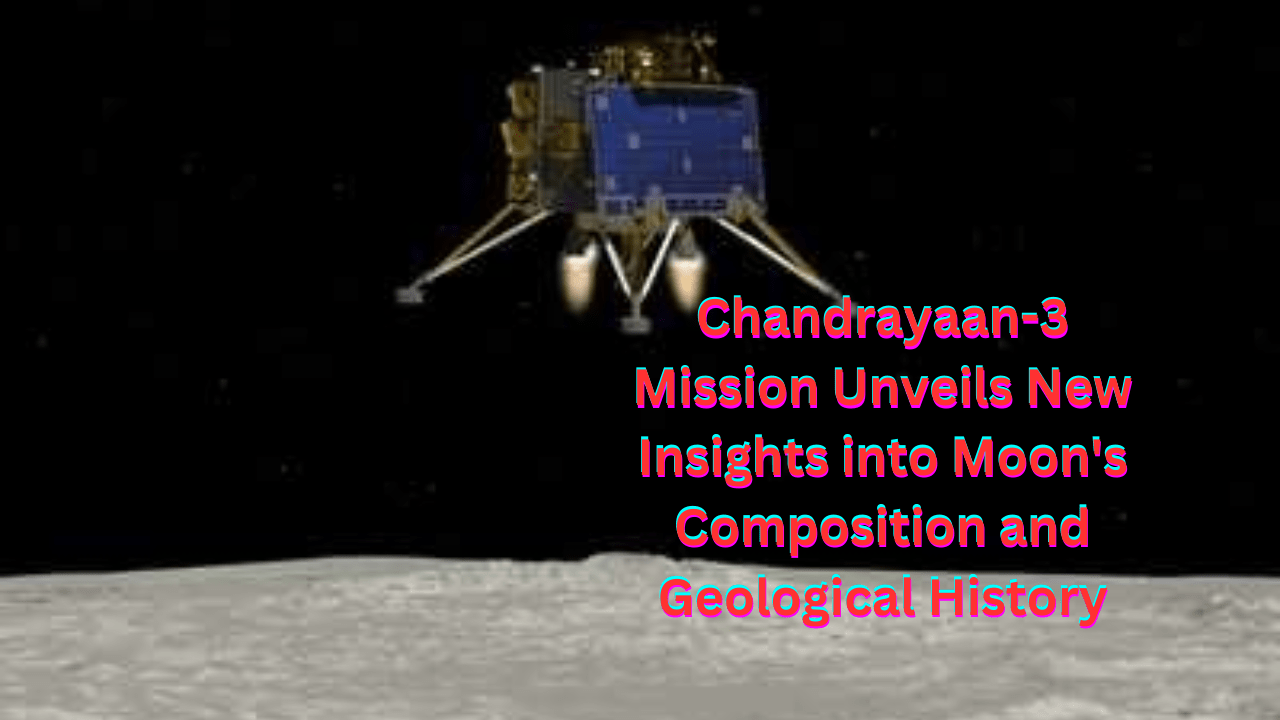In a significant milestone for space exploration, India’s Chandrayaan-3 mission achieved a remarkable feat by successfully landing the uncrewed Vikram Lunar lander near the Moon’s enigmatic South Pole. This historic achievement, carried out by the Indian Space Research Organization (ISRO), established India as the first nation to reach this relatively unexplored lunar region and the fourth country in the world to achieve a soft landing on the Moon.
The Chandrayaan-3 mission made its touchdown at a location approximately 373 miles from the lunar South Pole, opening up exciting possibilities for groundbreaking discoveries. Equipped with cutting-edge scientific instruments, including the Pragyan rover, this lunar exploration mission has unveiled crucial insights into the Moon’s composition and geological history.
India’s Chandrayaan-3 Mission Makes History by Landing Near the Moon’s South Pole
One of the most remarkable findings came from the Vikram Lander, which houses the Instrument for Lunar Seismic Activity (ILSA). This instrument represents a pioneering use of Micro Electro Mechanical Systems (MEMS) technology on the Moon and played a pivotal role in detecting seismic activity on the Moon’s surface on August 26, 2023. Essentially, it recorded a Moonquake, a phenomenon akin to earthquakes on Earth. This discovery marks the first seismic activity detected on the Moon in decades.
Seismic activity, typically associated with the frequency and severity of earthquakes in a given region, takes on unique characteristics on the Moon. Lunar seismic activity can arise from distinct sources, such as thermal fluctuations triggered by solar activity or impacts from celestial objects. ISRO stated that “ILSA’s primary objective is to measure ground vibrations generated by natural quakes, impacts, and artificial events,” emphasizing its significance.
India Becomes First Country to Detect Seismic Activity on the Moon in Decades
The mobility of the Vikram Lander on the Moon’s surface allowed ILSA to record these seismic events, providing scientists with invaluable data for analysis. Furthermore, these seismic readings might also serve as indicators of other lunar phenomena.
Advancements in technology have enabled scientists to revisit data collected from previous missions, shedding new light on the Moon’s enigmatic interior. According to a 2011 NASA study, the Moon likely has a core consisting of fluid iron surrounding a dense, solid iron core. In May 2023, researchers suggested that molten mantle blobs might separate from the core, rising to the surface as iron clumps, thereby triggering movements on the Moon.
With the Chandrayaan-3 mission leading the way in lunar exploration, the scientific community eagerly anticipates further discoveries that could deepen our understanding of the Moon’s past and present. It may even provide insights into the broader dynamics of celestial bodies within our solar system.
Vikram Lander’s ILSA Instrument Records Moonquake, Revolutionizing Our Understanding of Lunar Phenomena
conclusion
India’s Chandrayaan-3 mission has undeniably marked a momentous achievement in the realm of space exploration. By successfully landing the Vikram Lunar lander near the Moon’s enigmatic South Pole, the Indian Space Research Organization (ISRO) has not only positioned India as a pioneer in lunar exploration but has also contributed significantly to our understanding of the Moon.
The Chandrayaan-3 mission’s landing site near the lunar South Pole, a relatively unexplored region, holds immense promise for groundbreaking discoveries. Equipped with advanced scientific instruments, including the Pragyan rover, this mission has already provided us with vital insights into the Moon’s composition and geological history.
One of the most astonishing revelations has come from the Vikram Lander’s Instrument for Lunar Seismic Activity (ILSA). This innovative instrument, the first of its kind on the Moon, detected seismic activity, recording a Moonquake that parallels Earth’s earthquakes. This discovery, the first of its kind in decades, adds a fascinating layer to our understanding of lunar phenomena.
Moreover, the ability of the Vikram Lander to move across the Moon’s surface enabled ILSA to record these seismic events, offering scientists invaluable data for analysis. These seismic readings may serve as indicators of other lunar events, further enriching our knowledge of the Moon’s dynamics.
Advancements in technology have allowed scientists to revisit data from previous missions, shedding new light on the Moon’s enigmatic interior. The potential presence of a fluid iron core surrounding a solid iron ball, along with the idea of molten mantle blobs rising to the surface as iron clumps, adds to the intrigue of lunar geology.
As Chandrayaan-3 continues to lead the way in lunar exploration, the scientific community eagerly awaits the next wave of discoveries that could deepen our understanding of the Moon’s past and present. Beyond that, the insights gained may offer valuable clues about the broader dynamics of celestial bodies within our solar system. India’s remarkable achievement stands as a testament to the collaborative spirit of international space exploration and our unending quest for knowledge beyond our home planet.
